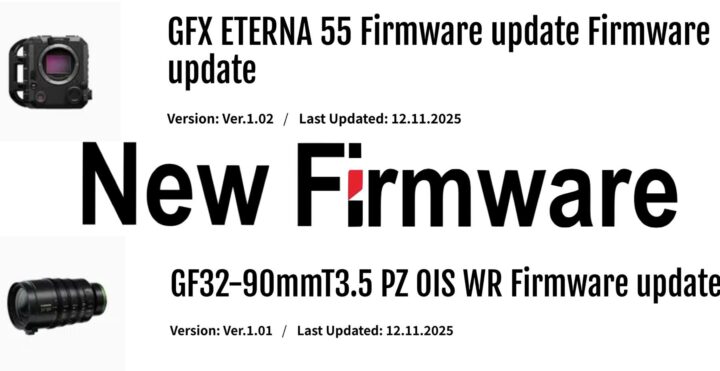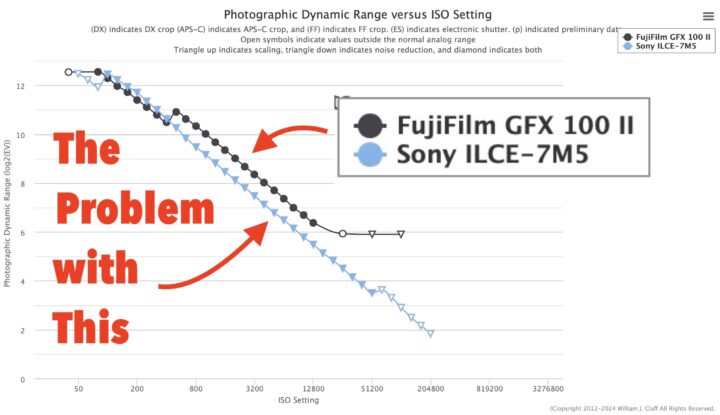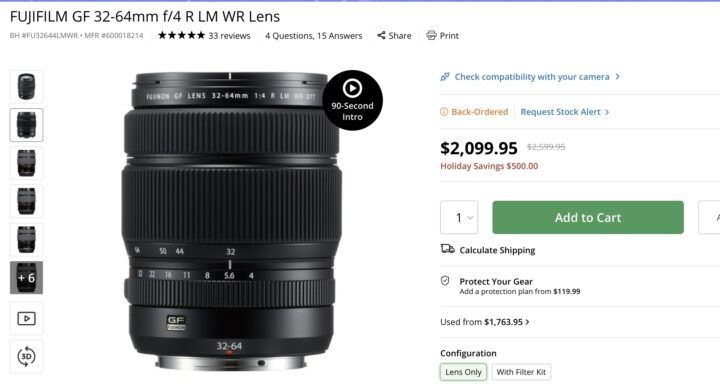How Sony Is Rewriting Dynamic Range Sensor Performance (DGO vs DCG) — And the Hidden Drawbacks You Need to Know

Dual Conversion Gain (DCG) – The “Old” Tech
First things first: what exactly is Dual Conversion Gain?
Modern camera sensors — Fujifilm included — operate in two modes:
- Low conversion gain: used at lower ISO values
- High conversion gain: activated automatically at higher ISO values (for example, ISO 500 on the GFX100 II)
Let’s look at the Fujifilm GFX100 II dynamic range data using Photons to Photos data:
- ISO 400 → 10.49 stops DR
- ISO 500 → 10.91 stops DR
- ISO 640 → 10.62 stops DR
Why does dynamic range increase at ISO 500 and ISO 640 compared to ISO 400?
Because that’s the point where the camera switches into high-gain mode, which reduces read noise and produces a DR “bump.”
For years, this dual conversion gain jump was the key method to maximize sensor performance.
But that changed—recently, and dramatically—with the launch of the Panasonic S1II first, and now also with the Sony A7V.
Dual Gain Output (DGO) – The New Tech
With the Panasonic S1 II (Sony-made, partially stacked sensor) and now the Sony A7 V, something unusual appeared in the data:





